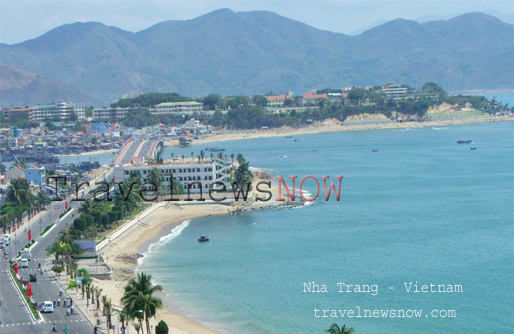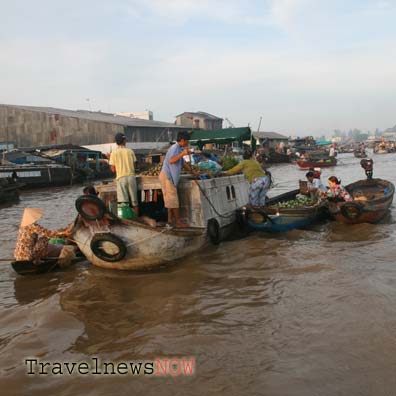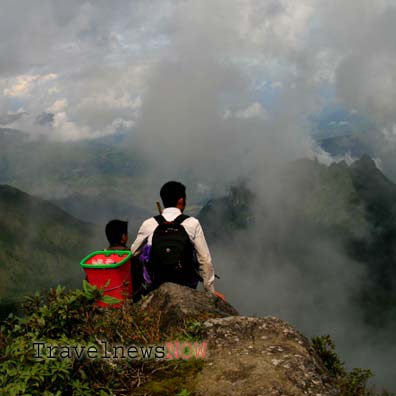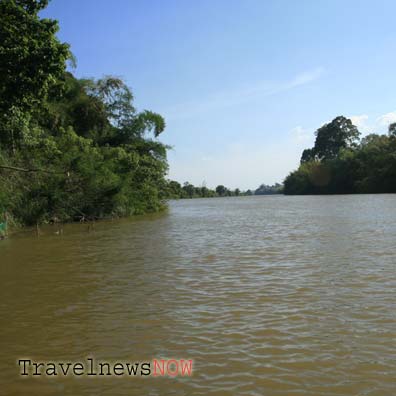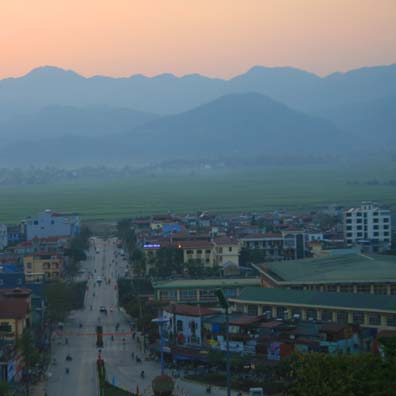So you are on holidays in Vietnam and there is news that a typhoon is looming in Northern Vietnam. Would your trip in the South of Vietnam be affected by the coming typhoon in Northern Vietnam? The simple answer is YES!
Why then? The answer is quite simple:
1/ Active Southerly Wind in Southern Vietnam
Typhoons which come to Northern Vietnam are mostly in between June and September (maybe October). During this time, the Southerly Wind is very active in Southern Vietnam and in the Central Highlands of Vietnam. To a lesser degree, it may affect the South of the Central Coast of Vietnam. The typhoon often draws in a massive amount of energy to get stronger and stronger, and it is more often than not that the typhoon will not weaken until it makes landfall.
During the time the typhoon gets stronger barreling towards the shore of Northern Vietnam, it draws in winds including the Southerly Wind. This makes the Southerly Wind even stronger and it is often so strong that it destroys crops, houses and fell trees... This is why on hearing news of a looming typhoon barreling towars the shore of Northern Vietnam, boat trips between the inland and offshore islands in all of Vietnam (including those off the Central Coast and Southern Coast) are cancelled.
2/ No Travel, Be It Air Travel or Boat Travel, Between Offshore Islands and the Inland
If you are on vacations on one of the offshore islands in the Central Region of Vietnam or South of Vietnam during the time of a typhoon coming to Northern Vietnam, you are likely not able to make a trip back to the shore during certain period of time, either by air or boat boat.
3/ Looming Dangers in Cities/Mountains
If you are on tour in Southern Vietnam (including on the islands) or Central Highlands of Vietnam during the time a typhoon is coming to Northern Vietnam, be prepared with strong gusts of winds which fell trees and destroy cars in the streets, houses... Be prepared with torrential rain which certainly will make streets flooded. Be prepared with possible landslides in the Central Highlands...
4/ It is Coincident or not?
In this section we are listing the events which may or may not be coincident. It may be or may not be helpful. There may be or may not be correlation between these events at all. In our thinking, if these events take place in the same time frame or slightly different time frames, we do need to take into consideration if we plan to travel or are on holidays in the Central Highlands and in Southern Vietnam upon hearing of news of a typhoon in Northern Vietnam.
If you are travel agencies, tour companies or tour operators planning holidays in Vietnam for your travelers, then it may be helpful or may not be helpful to take these events into account. Whatever you do you do it of your own free will and at your own risk; and TravelNewsNow takes no responsibility or liability for your actions.
4.1 Typhoon No. 1 (Talim, from 16 to 18-July-2023)
The typhoon made landfall in China which brushed through Lang Son and Cao Bang after having weakened to be a tropical depression. The typhoon was from 16 to 18-July-2023. In the same time in Southern Vietnam, there were strong winds and torrential rain. Strong winds destroyed crops and several hundred houses in the Mekong Delta and on some offshore islands, felled trees in several cities. The heavy rain caused many places on the Phu Quoc Island flooded.
4.2 Typhoon No. 2 (Doksuri) from 27-July to 28-July-2023
The typhoon did not come to the inland of Vietnam at all, only to the northern region of the East Vietnam Sea then to Fujian Province (China). At the same time, there was continuous rain in the Central Highlands and Southern Vietnam for a few days which caused fatal accidents (Bao Loc Pass), landslides, floods. The Cat Tien National Park announced to stop opening to tourism temporarily due to rising water. Binh Phuoc Province had several places (Bu Dang) flooded.
On 3-August-2023 the Cat Tien National Park announced resuming of its normal tourism activities meaning the water levels are under control. This may mean other seasonal weather factors did not directly contribute to the earlier heavy rain.







